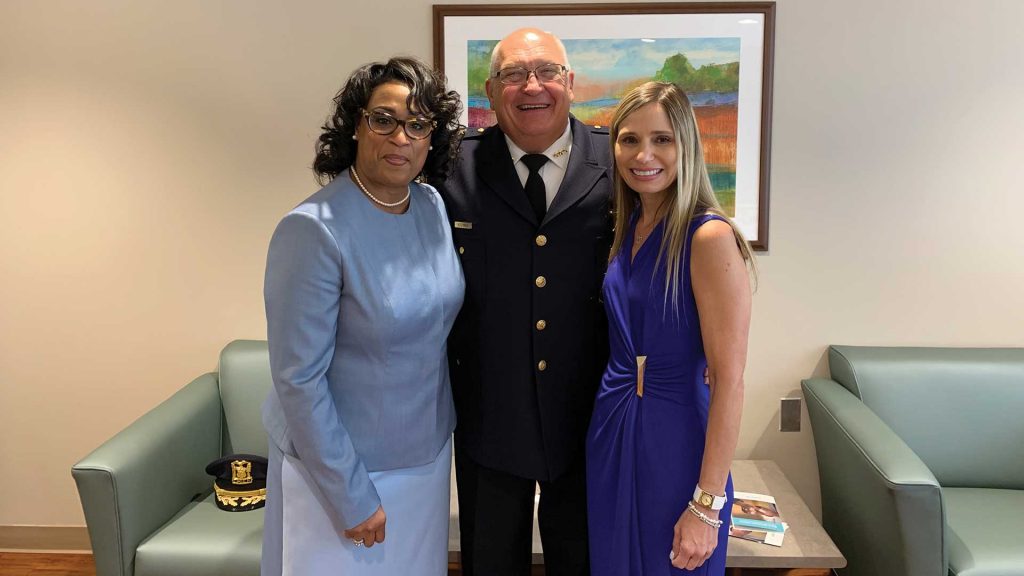
I’m a dinosaur, a 44-year veteran of urban law enforcement. One of the first days assigned to a patrol district, I watched with awe as a police officer reported for his tour of duty drunk. I waited for the watch commander to blow up and do who knows what to this sodden officer. I was stunned to hear, “Sarge, take his revolver, put him in the lock-up and let him sleep it off.” At the time, I thought that this was cops taking care of other cops; I came to realize that this was simply enabling and not helping resolve the problem. Time went on; I moved through various assignments and ranks.
Ten years on, as a patrol sergeant, working with the same watch commander, a field training officer came to work drunk. I was prepared to call EAP, make arrangements to get the officer help, and the captain uttered those words, “Sarge, take his pistol, put him in the lock-up and let him sleep it off.” In 10 years, we had not progressed one bit in terms of helping our personnel. We continued to enable the problem. In the intervening years, there had been strides made to reduce the rate of substance abuse among officers and provide recovery, treatment and mental health options for personnel. However, these resources seemed to be rarely used. What were the stumbling blocks?
A little research revealed that under Illinois law, to possess a firearm, you must have a Firearm Owner’s Identification Card (FOID). If you are hospitalized for a psychiatric issue or are on a locked unit, the hospital must notify the Illinois Department of Public Health, which then notifies the Illinois State Police. And once a comparison of admissions to FOIDs is made, your FOID is revoked. It’s hard to be a cop without a firearm. Seems to be a blockade to treatment, right? But wait, there’s more!
An officer who was caught “hot” on the random drug screen was afforded the opportunity to go into treatment or face termination; the officer was prepared to fight to have his FOID reinstated and just go into the inpatient treatment in order to save his job. Two days into the 30-day program, he showed up at the station; when I inquired what was going on, he said, “You may as well go ahead and start the termination process. I can’t sit in group sessions with gang bangers and thugs I’ve locked up and talk about my family situation.” The officer resigned.
Many years later, I was serving as a police chief in a small community near the Wisconsin state line, and an officer’s wife came in to ask me to please participate in an intervention for her husband; she stated that they were both alcoholics and she was in treatment. I agreed, and after the intervention, the officer went to a facility in the northwest corner of the state. He was back within four days, stating almost verbatim the concern stated years earlier by the other officer. This officer drank himself to death a few months later, leaving his wife and a young son.
This co-mingling of LEOs and non-LEOS in treatment centers is a significant reason given by many who need treatment but refuse to go.
According to the International Association of Chiefs of Police and the Bureau of Justice Statistics, there are approximately 855,000 active duty law enforcement officers in the United States today. At any given time, approximately 25–35% of that number suffer from a substance abuse disorder. That’s approximately 214,000 men and women who are struggling with some type of substance abuse condition. It’s not confined to any one geographic region, ethnic or racial group, or any cluster of agencies. This is a numerically significant population; it is a population charged with keeping others safe and helping others who cannot help themselves. The question becomes: How do we help the helpers?
In March of 2017, Vickie Poklop, our embedded police counselor, approached me with a suggestion that we should approach the president at Holy Family Hospital in Des Plaines, Illinois, with a proposal that Holy Family creates a law enforcement officers-only substance abuse treatment program. We made an appointment with Yolande Wilson-Stubbs, president of Holy Family Hospital, to discuss the idea. A subsequent meeting included 50 police chiefs and special agents in charge of the Chicago Metro area. After some discussion, Wilson-Stubbs asked one question of the group: “How many in here have at least one officer who would benefit from this program?” Every hand in the room went up. Wilson-Stubbs agreed that this was a very much-needed and presently nonexistent resource.
The staff of the very successful Keys to Recovery unit at Holy Family Hospital eagerly approached the project, developing a wish list of what was needed and how things should be structured. Funding was allocated, demolition and construction were completed, and the facility opened its doors in July of 2019.
Saint Michael’s House at Holy Family Hospital is located 15 minutes north of O’Hare International Airport. Saint Michael’s House is a secure, unlocked facility designed to maintain the privacy and dignity of those seeking treatment there. It has its own admitting office, separate from the rest of the facility, and dedicated outpatient and counseling facilities. To date, every officer referred has been personally admitted by the medical director.
Saint Michael’s House provides a structured, holistic approach to substance abuse treatment, bringing in nutrition, exercise (at its own dedicated exercise facility), as well as group sessions and individual counseling. A state-of-the-art video conference room is available for officers in treatment to video chat with family, friends or their personal physicians as necessary. Computers are available for the officers to remain in contact with family and pay bills if needed.
Program Levels of Care
- Medical Detox: An inpatient program that includes 24-hour monitoring and treatment of withdrawal from alcohol and drugs.
- Residential: An intensive and structured regimen of care provided in a 24-hour residential setting, where residents will spend up to 28 days in treatment. This is a comprehensive program that includes individual, group and family therapy.
- Partial Hospitalization: Medically supervised program offering comprehensive, therapeutically intensive, coordinated and structured clinical services at least five days a week; also includes boarded outpatient.
- Intensive Outpatient: A half-day program ideal for someone who is actively working, has completed a previous program or is looking for a first-time program.
- Aftercare: An exclusive once-a-week group for graduates of the program.
Saint Michael’s House at Holy Family Hospital is endorsed by the Illinois Association of Chiefs of Police, Chicago Police Department and Police Chaplains Ministry and more than 80 local police departments from across Illinois.
The biggest issue facing Saint Michael’s House at this point involves getting the message out to human resource directors/managers, police chiefs and police officers that this program can ultimately save lives and be cost-efficient for the municipality. Further, the HR managers/directors need to let the insurance carriers know that three days of inpatient care will not be enough to break the cycle and that they need to demand more covered inpatient time. Cops who have substance abuse disorders are broken, but they can be fixed.
If you’re considering a similar project in your region, be mindful of a few things:
- Work with an established substance abuse program with a record of success that has agreed to meet the needs of police officers.
- Be prepared to make your presentation to health-care professionals who may not share your vision and are very closely looking for a return on their investment.
- Recruit support from the largest law enforcement agencies in your area, have their chief write a letter of support and commitment endorsing the project.
Saint Michael’s House can be reached at (847) 813-3300.
As seen in the February 2021 issue of American Police Beat magazine.
Don’t miss out on another issue today! Click below:





